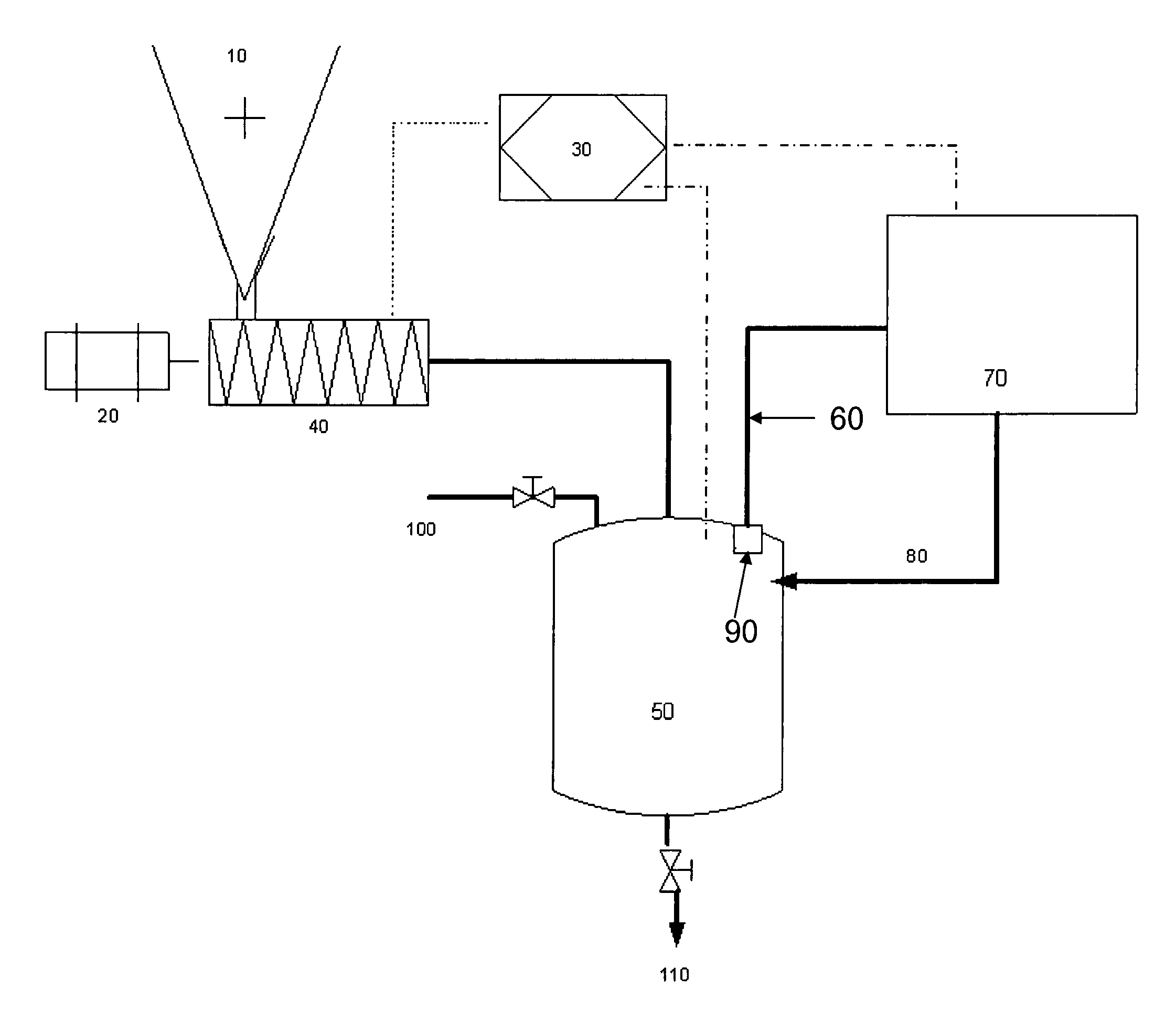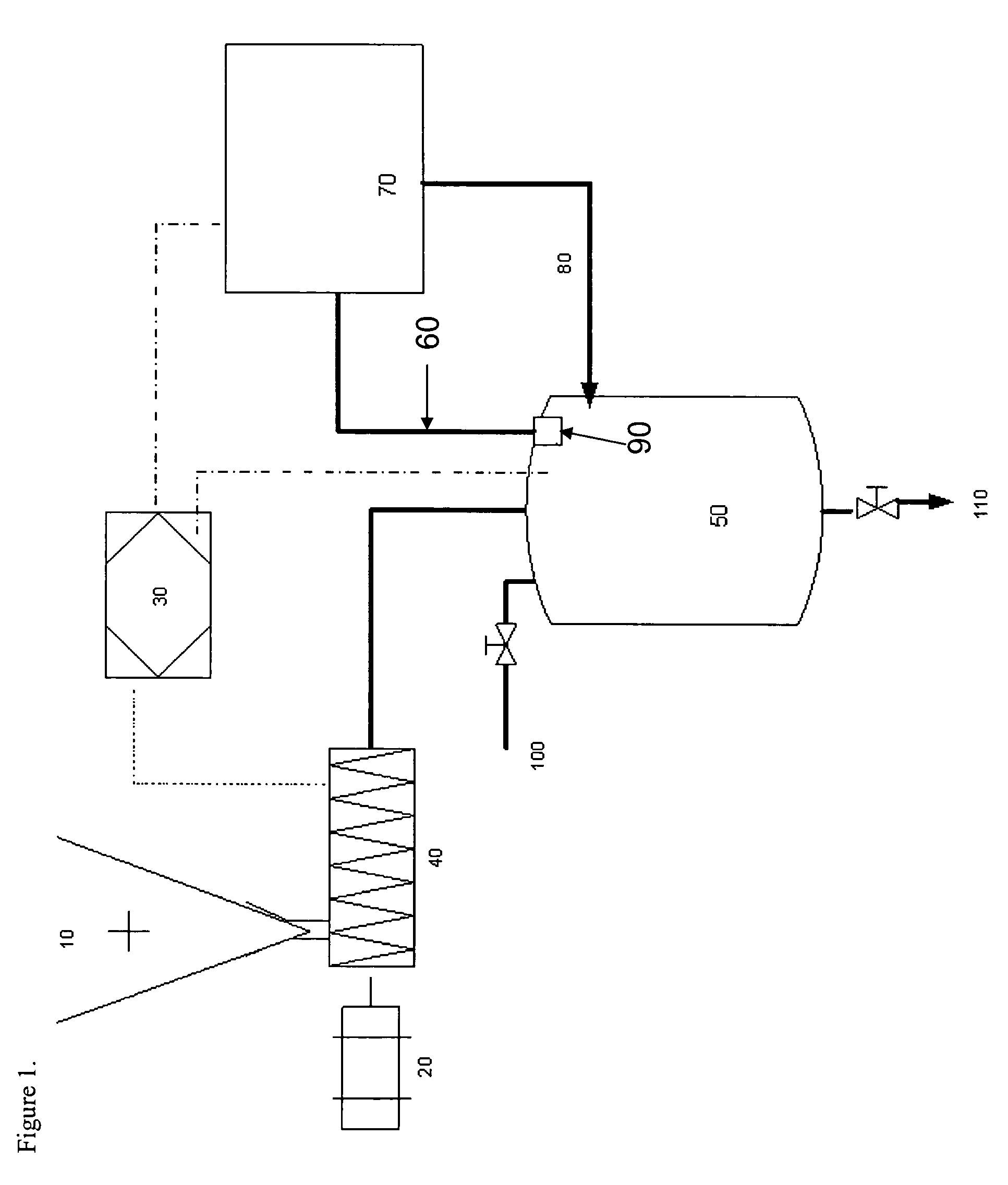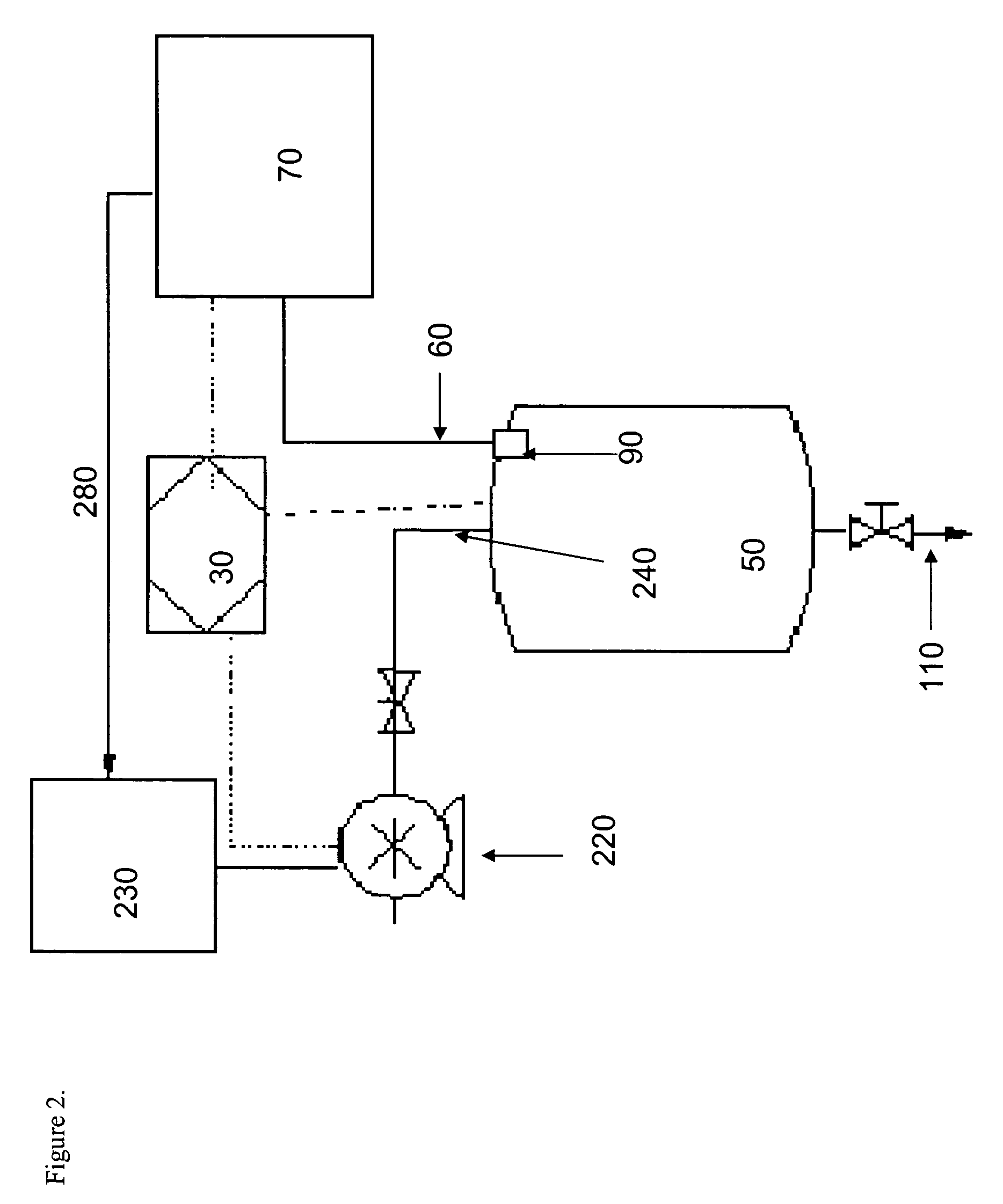Methods and devices for hydrogen generation from solid hydrides
a solid hydride and hydrogen technology, applied in the direction of electrochemical generators, chemical/physical/physical-chemical processes, chemical apparatus and processes, etc., can solve the problems of excessive hydrogen accumulation in the fuel storage chamber, complicated widespread use, and inability to meet the requirements of the application
- Summary
- Abstract
- Description
- Claims
- Application Information
AI Technical Summary
Benefits of technology
Problems solved by technology
Method used
Image
Examples
example 1
[0051] H2 flow rates were measured in a semi-batch reactor system with about 5 g of solid granular sodium borohydride loaded in a 250 mL Pyrex reactor. Acidic reagents as shown in Table 1 were fed by a syringe pump to the reactor. The rate of hydrogen production was recorded using an on-line mass flow meter. The total amount of hydrogen generated in each run was established by numerical integration of dynamic hydrogen flow profile. After each run, reaction products in the reactor were collected for bulk density measurements and NMR analysis. Sodium borohydride conversion was analyzed using NMR of the post-reaction mixture after each run was completed.
TABLE 1Hydrogen generation from pure sodium borohydrideAcid concentrationWeight ratioMolar ratioConversionEnergy density*Bulk Densitywt %Acid:fuelH2O:NaBH4H+:NaBH4%Wh / kgStateg / mLHCl152.65.270.46100996slurry0.78203.05.090.64100882slurry1.60372.43.150.93981023solid0.73H2SO4252.944.620.57100901slurry1.61
*Based on fuel (NaBH4 and acid) on...
example 2
[0053] Using the procedures described in Example 1, hydrogen was generated using 5.75 g of a mixture of sodium borohydride (87 wt %) and sodium hydroxide (13 wt %). Results are summarized in Table 2.
TABLE 2Hydrogen generation from sodium hydroxide stabilized sodium borohydride (87 / 13 wt / wt NaBH4 / NaOH)Acid concentrationWeight ratioMolar ratioConversionEnergy density*Bulk Densitywt %Acid:fuelH2O:NaBH4H+:NaBH4%Wh / kgStateg / mLHCl222.64.90.7095809solid1.08242.75.00.7897813solid1.16372.84.31.2799795solid0.73H2SO4252.74.997813solid1.02272.85.0100809slurry1.21252.64.80.5897825slurry1.02272.84.90.66100823solid1.21
*Based on fuel (NaBH4 and acid) only and a fuel cell efficiency of 50%
PUM
| Property | Measurement | Unit |
|---|---|---|
| density | aaaaa | aaaaa |
| temperatures | aaaaa | aaaaa |
| density | aaaaa | aaaaa |
Abstract
Description
Claims
Application Information
 Login to View More
Login to View More - R&D
- Intellectual Property
- Life Sciences
- Materials
- Tech Scout
- Unparalleled Data Quality
- Higher Quality Content
- 60% Fewer Hallucinations
Browse by: Latest US Patents, China's latest patents, Technical Efficacy Thesaurus, Application Domain, Technology Topic, Popular Technical Reports.
© 2025 PatSnap. All rights reserved.Legal|Privacy policy|Modern Slavery Act Transparency Statement|Sitemap|About US| Contact US: help@patsnap.com



